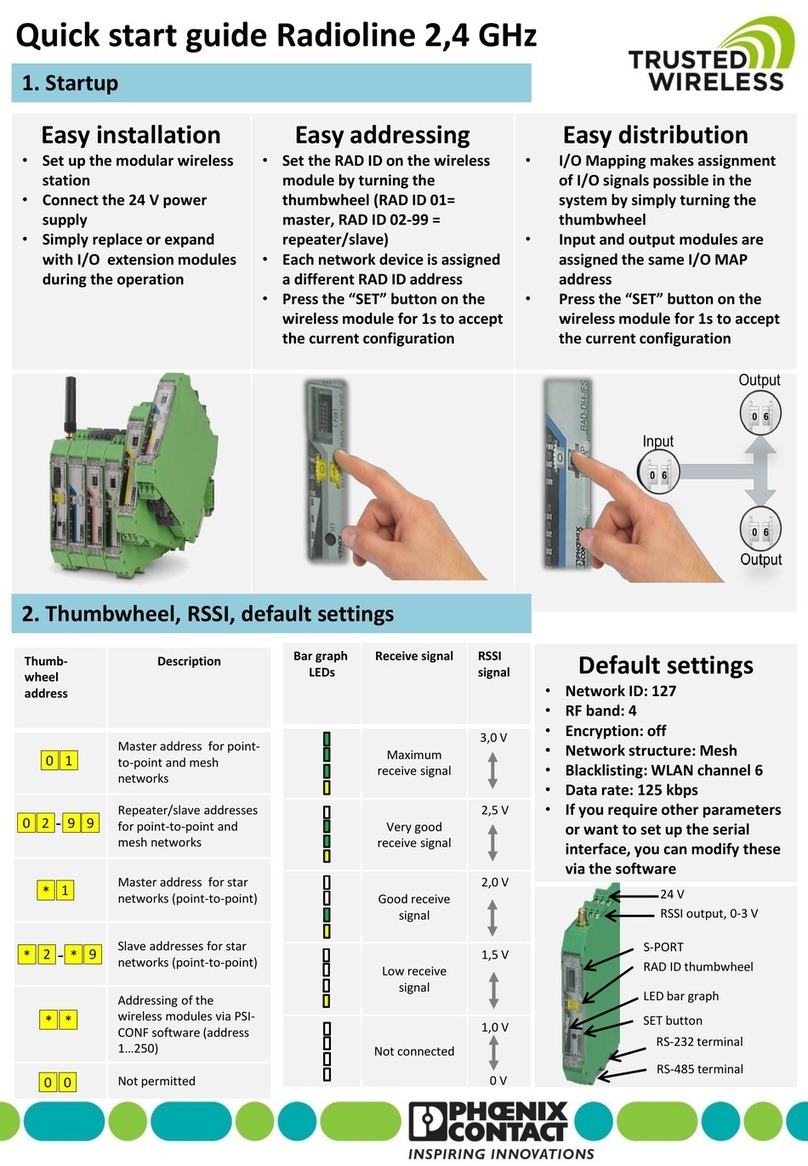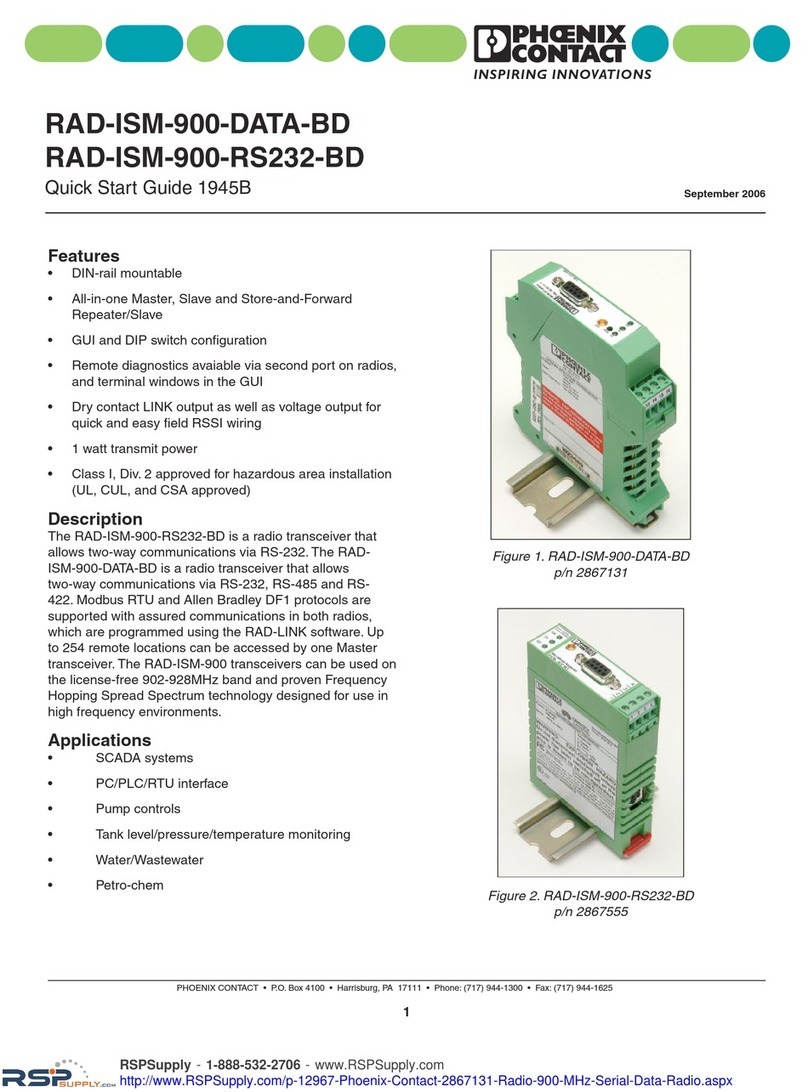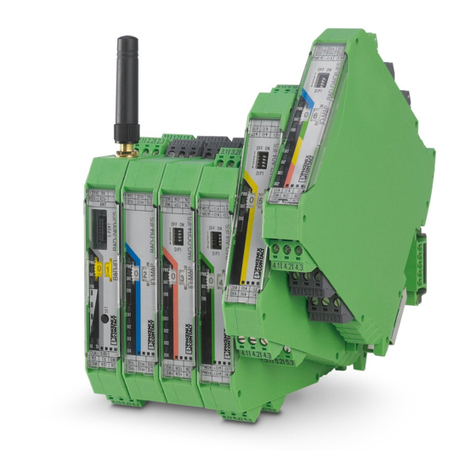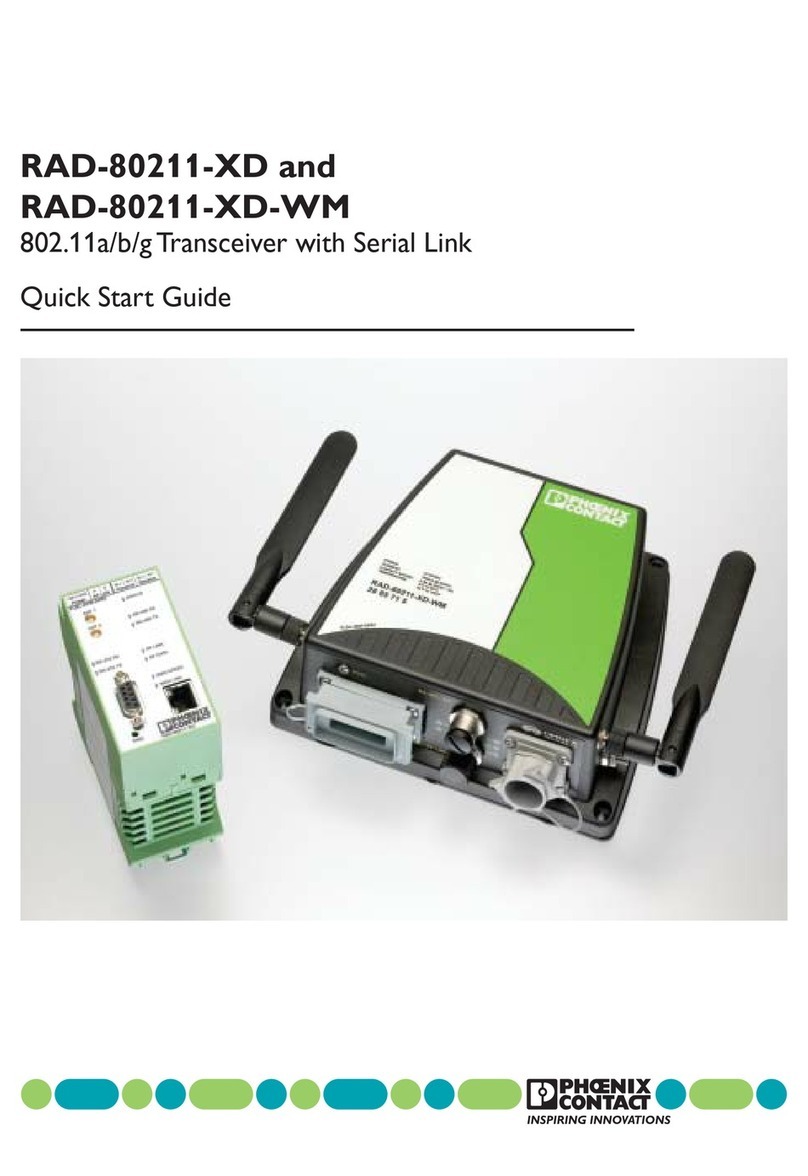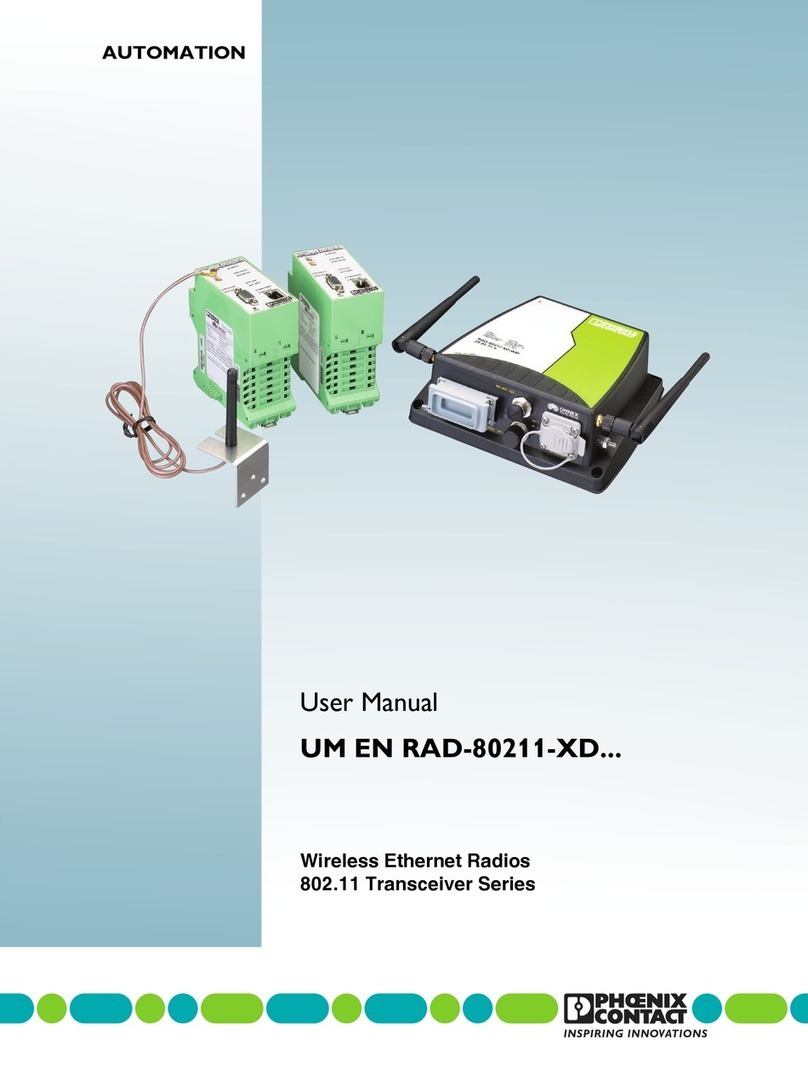
vii
RAD-802.11-XD and RAD-802.11-XD-WM
User Manual – Table of Contents
SECTION 5
Programming the Radio
5.1 Configuring your PC to Communicate with the Radio ................................................ 5-2
5.2 Logging Into the Radio ...............................................................................................5-2
5.3 Viewing Device Information........................................................................................5-3
5.4 General Device Information .......................................................................................5-4
5.5 Local Diagnostics....................................................................................................... 5-5
5.6 Device Diagram ......................................................................................................... 5-5
5.7 GeneralConfiguration................................................................................................ 5-6
5.7.1 OperationalMode .........................................................................................5-7
5.8 LAN Configuration .....................................................................................................5-7
5.9 SNMPConfiguration ..................................................................................................5-8
5.10 DHCP Server ...........................................................................................................5-10
5.11 Configuring the RAD-80211-XD/-WM as an Access Point ....................................... 5-10
5.11.1 General ....................................................................................................... 5-10
5.11.2 Access Point Security .................................................................................5-13
A. Static WEP .............................................................................................5-13
B. IEEE 802.11i and WPA Security ............................................................. 5-14
5.11.3 MAC Address Filtering ................................................................................5-15
5.11.4 Rogue AP Detection.................................................................................... 5-16
5.11.5 Advanced Settings ...................................................................................... 5-16
5.12 ClientConfiguration ................................................................................................. 5-17
5.12.1 General ....................................................................................................... 5-17
5.12.2 Security....................................................................................................... 5-18
A. Open or Shared Authentication (WEP Security) ..................................... 5-18
B. WPA-PSK and WPA2-PSK Encryption ...................................................5-19
5.13 BridgeConfiguration ................................................................................................5-19
5.13.1 General ....................................................................................................... 5-19
5.13.2 Bridge Radio Settings .................................................................................5-20
5.13.3 Bridge Security ........................................................................................... 5-21
A. Static AES Security.................................................................................5-21
5.14 Serial I/O Port Configuration ....................................................................................5-22
5.15 Passwords ...............................................................................................................5-23
5.16 Store and Retrieve Settings ..................................................................................... 5-23
5.17 Performance ............................................................................................................5-24
5.18 Maintenance ............................................................................................................ 5-24
5.19 Monitoring / Reports................................................................................................. 5-24
Table of Contents
